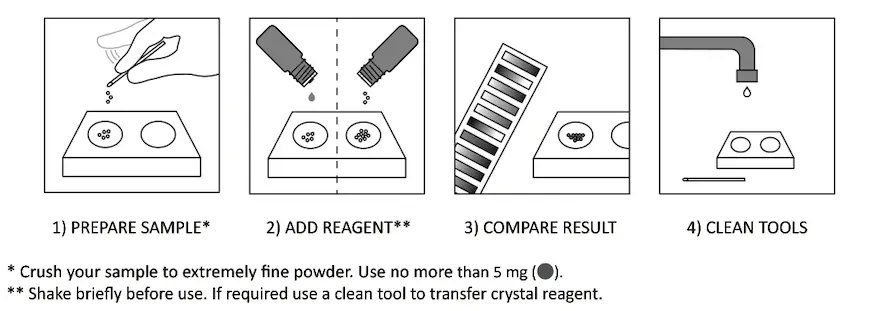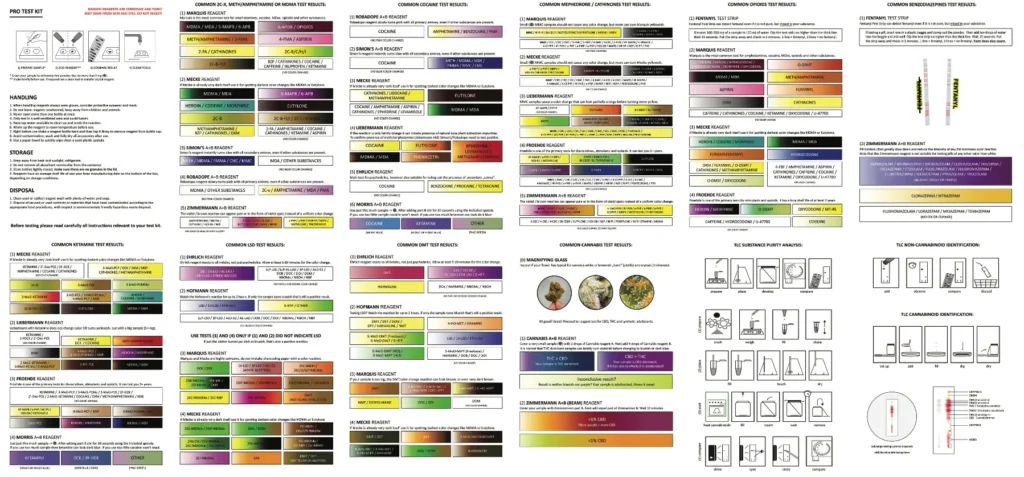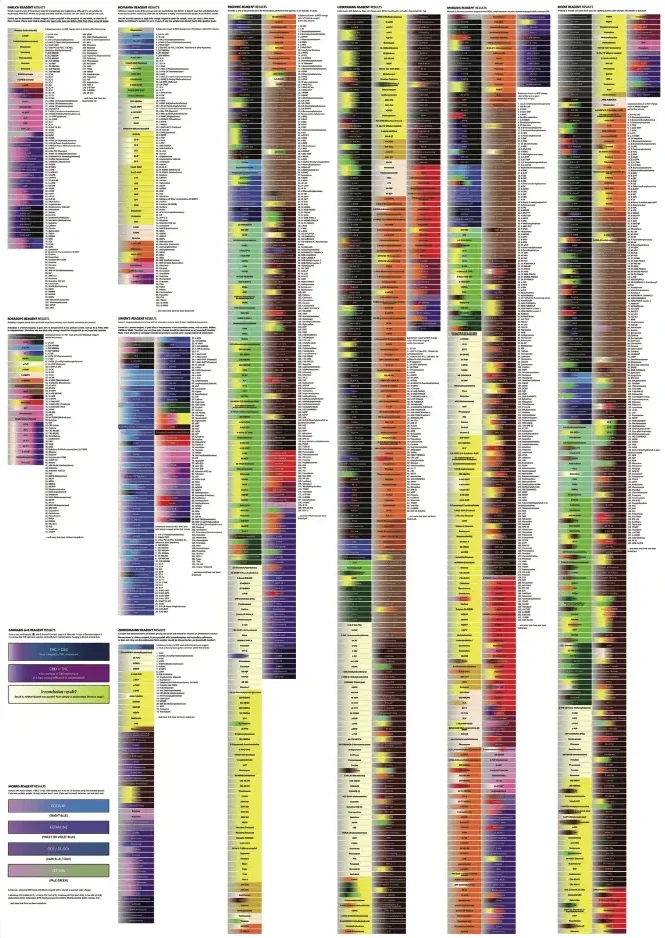Marquis Reagent Test Instructions
The Marquis reagent test, initially developed by Eduard Marquis in 1896, is a commonly used qualitative spot test in the field of forensic chemistry to detect alkaloids and other compounds. It works by producing a color change when it reacts with specific substances. Typically, it is used to identify a range of substances, including MDMA, amphetamines, and opiates, among others. This test has found extensive application in forensic analysis and harm reduction initiatives, aiding in the identification and differentiation of various illicit substances. Its simplicity, rapid results, and effectiveness have contributed to its widespread use in drug testing and analysis, making it an invaluable tool in the identification of potentially harmful compounds.
Marquis reagent is the most common drug testing kit for crystals, powders or pills. Marquis test is best for 2C-x, DMT, MDMA, meth/amphetamine, mephedrone, opioids and more.
How to test?

Questions?
Still searching for the best test kit?
Click here to see our full offer, or here for single-use kits, or here for all multi-use kits including TLC purity testing kits.
A positive or negative Marquis testing kit result does not indicate if a substance is safe. No substance is 100% safe.





